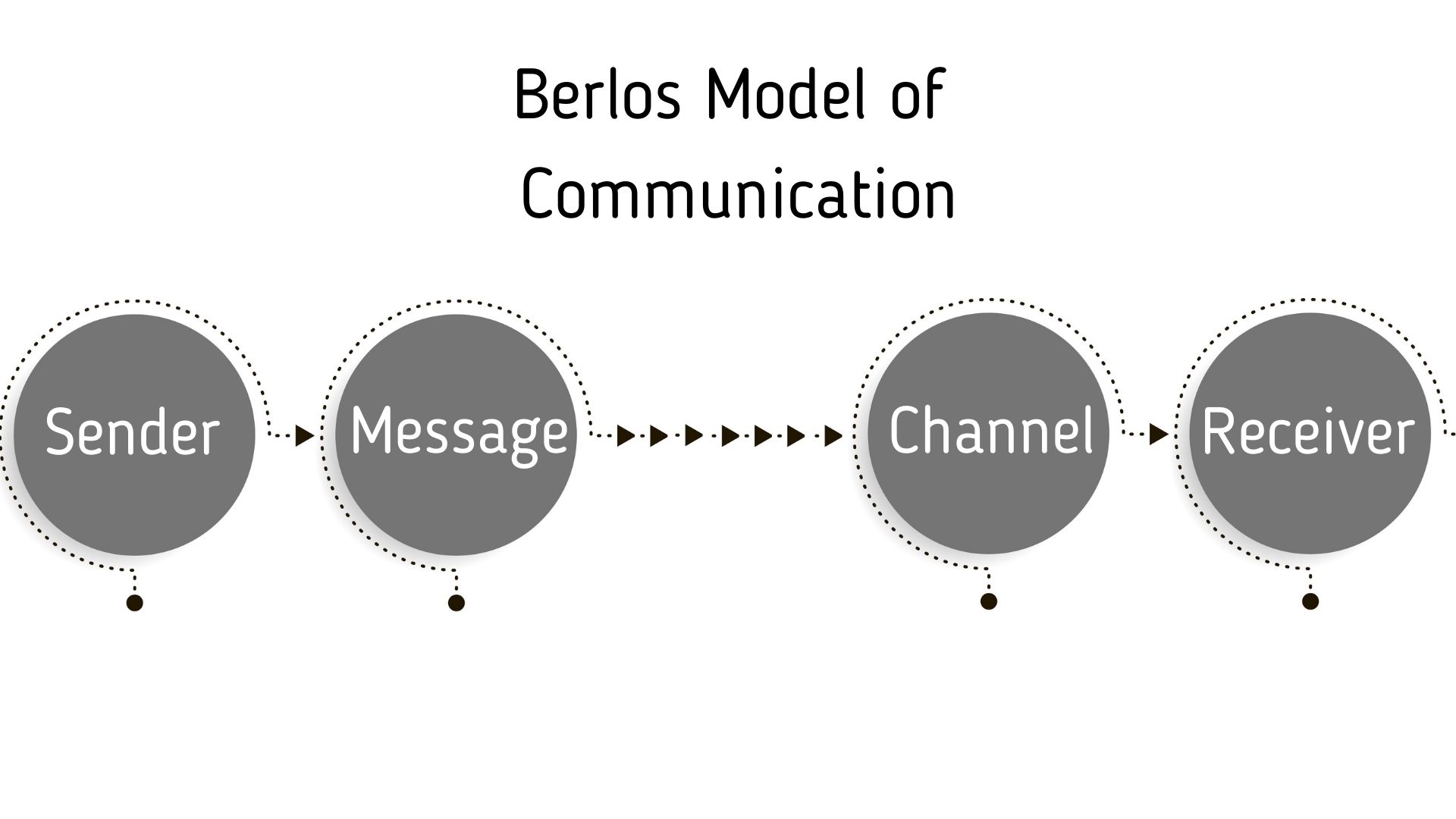Berlo’s model of communication is associated with the emotional aspect of the message that affects the individual components in the communication process. This model of communication is also responsible for focussing upon encoding and decoding that might occur between the sender and the receiver.
Berlo’s Model revolves around four components for describing communication processes- sender, message, channel, and receiver. These components are further affected by some other factors as well. Let us delve into the world of the berlos process-
What is Berlo’s Model of Communication?
Berlo’s Model of Communication revolves around the Shannon-Weaver model of communication. In 1960, David Berlo explained individual communication components and the factors affecting those components through the Sender-Message-Channel-Receiver communication model.
In 1948 Claude Shannon and Warren Weave published a mathematical model for enhancing technical communications in Bell System Technical Journal. The Sender-Message-Channel-Receiver model is constructed around that mathematical model.
Components of Berlo’s Model – SMCR Model
The communication process involved in Berlo’s Model is actually the component of the SMCR model of communication.
- Sender -the source of the message
- Message – framing of a message
- Channel – Medium used to convey the message
- Receiver- the recipient of the message
1. Sender
The sender or source is that point of communication from where the message originates. The sender is responsible for encoding or framing a message for initiating communication and is thus called an encoder.
Factors affecting sender:
1. Communication Skills
The first and foremost factor that affects any communication is the communication skills possessed by a sender. A sender possessing excellent communication skills will be able to communicate better. Communication skills are not limited to verbal communication. One’s ability to read, write and listen also falls under communication skills.
2. Attitude
Attitude is the feeling that a sender possesses towards the audience, environment, subject, or oneself. To ensure effective communication, the attitude of both sender and receiver matters.
3. Knowledge
To ensure effective communication, a sender needs to possess knowledge about the message that is being communicated. Knowledge doesn’t necessarily mean academic or general knowledge. It is all about having sound knowledge about the subject of communication.
4. Social System
A sender also belongs to society, and the societal values, beliefs, culture, or religion are also applicable to the sender. These societal elements vary from person to person and can affect communication accordingly.
The place and situation of a sender can also disrupt communication.
5. Culture
Cultural differences can make communication difficult. It happens that what is acceptable in one culture is deemed offensive in another.
2. Message
To enable different forms of communication, when someone sends the message, one needs to transform their thoughts into voice, video, text, or any other form of message.
Factors Affecting Message:
1. Content
The whole message comes wrapped in content, from beginning to end. The content constitutes the meaning and body of the message.
2. Elements
Communications come accompanied by some gestures or sign languages, called elements of a message. Too many elements accompanying a message can affect communication.
3. Treatment
In Barlow’s model, treatment defines the way through which a message gets delivered to the receiver.
4. Structure
Having a message is not enough for ensuring effective communication. The effectiveness of a message depends on how the message is being structured or arranged.
5. Code
People can choose to convey a message in text, video, written, or in any form. Code is the form in which a person chooses to convey the message.
3. Channel

The medium through which the message flows to a receiver is referred to as a channel. While communicating, one may require the aid of various channels. But people tend to depend on their five sense organs for conveying messages.
Factors Affecting Channel
1. Hearing
Through hearing, one can receive orally transmitted messages.
2. Seeing
One can learn body language to written messages by seeing.
3. Touching
Non-verbal messages are often transmitted through touch.
4. Smelling
One can gather lots of information by smelling.
5. Tasting
Information about food can be gathered with the help of the tongue through the tasting.
4. Receiver
Communication is a two-way process, and a sender undergoes all the components mentioned above to communicate messages to the receiver. The receiver is the person who receives and decodes the message. The responsibility of interpreting and understanding the meaning of the message lies on the shoulders of the receiver. One can only establish effective communication if the sender and receiver reside on the same level of understanding.
Factors Affecting Receiver
Factors affecting the sender and factors affecting the receiver are similar.
1. Communication skills
Possessing excellent communication skills is essential for a receiver. Decoding and understanding messages require receivers to put their communication skills to use. Along with that, a receiver being on the receiving end should possess excellent listening skills to keep the communication going.
2. Attitude
Attitude involves the outlook of the receiver towards the sender and their messages.
3. Knowledge
A receiver should possess knowledge about the subject of communication to interpret and understand the message clearly.
4.Social system
Societal beliefs, values, religion can influence the receiver’s interpretation skills.
5. Culture
Similarly, cultural values can also influence the understanding and interpreting abilities of a receiver.
Drawbacks of Berlo’s Model of communication
- The model is not complete as it fails to acknowledge the communication barriers.
- It leaves no room for receiving feedbacks from recipients as it is a linear model.
- Senders and receivers have to be on the same level to ensure the effectiveness of this model.
Conclusion
David Berlo laid the foundation of achieving effective communication with this Sender-Message-Channel-Receiver model. Being a first of its kind, it is not flawless. The model contains leaves a lot of loopholes, but still, it explains the factors stopping one from achieving effective communication in detail.
So, what are your thoughts about the effectiveness of Berlo’s SMCR model of communication?
Pinky is an MBA in Marketing from the University of Mumbai. She loves helping people out in learning Marketing and sharing latest ideas and tactics for growing businesses.
